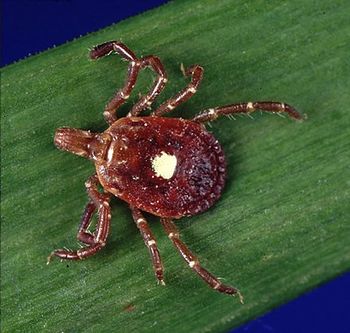
- October 2016
- Volume 1
- Issue 1
Is There a Bigger Threat Than Zika? An Exclusive Interview with Morgan Hennessey, DVM, MPH, DACVPM
In an exclusive interview with Contagion, Morgan Hennessey, DVM, MPH, DACVPM, epidemic intelligence service officer, Centers for Disease Control and Prevention (CDC), Arboviral Diseases Branch, discussed the threat of active transmission of mosquito-borne viruses within the United States, such as west nile virus (WNV), yellow fever (YF), and Zika.
Contagion: One could argue that WNV and YF are bigger threats to the general population than Zika, since Zika only causes complications in a limited population and is rarely fatal. Yet, they are not getting as much media coverage (at least in the United States). Does this concern you? Should we be talking more about these viruses?
Hennessy: WNV and Zika are both of concern, but for different reasons, and YF generally does not occur in the United States. WNV is endemic in the United States, and we see cases of WNV reported from several states throughout the summer. YF does not occur in the United States, but there is currently an outbreak in Africa and vaccinations for individuals that travel to YF-endemic areas is recommended. Zika virus is of concern because it can cause severe birth defects in babies born to women who were infected during pregnancy. [The] CDC still has a lot to learn about Zika virus. Every day, [the] CDC learns something new about the virus, which helps us update prevention recommendations.
C: How do the threats of WNV and YF compare to those of other mosquito-borne diseases, such as Zika, chikungunya, and dengue?
H: All mosquito-borne viruses are of concern. WNV is spread by Culex mosquitoes, which are different from the Aedes aegypti and Aedes albopictus mosquitoes that spread Zika, chikungunya, and dengue. Preventing mosquito bites is the most important prevention step that people can take to protect themselves from any mosquito-borne disease. By using insect repellants and wearing long-sleeved shirts and long pants, people can protect themselves from mosquito bites.
C: Last year, there were no WNV cases reported until late summer. What factors do you believe are contributing to the early rise of the virus this year?
H: We are not sure; it may just be a simple matter of mosquito season starting earlier this year. There are a number of reasons we may be seeing cases earlier. It could be weather changes, which have allowed mosquitos to come out earlier this year, or better surveillance and more people being tested for mosquito-borne diseases because awareness among the public is better. We can’t say for sure why there was an earlier start to the mosquito season this year, but there will continue to be additional cases of WNV as we move [ further] into the summer months.
C: Although vector populations in the United States are currently not infected with YF, there have been reports of travel-related cases in other regions of the world, making cases in the United States a possibility. YF had been eliminated from most regions of the world in the 1950s. Why do you believe we are seeing its rise again as a global threat now?
H: YF is mostly associated with living conditions. In poor urban settings, the mosquito that carries [the] YF virus can proliferate and spread the virus. Nonhuman primates also serve as a reservoir for [the] YF virus, which makes it very difficult to eliminate. The virus can be transmitted by mosquitoes from monkeys to people when people are visiting or working in the jungle. If a person gets infected in the jungle and returns to an urban setting, a mosquito living in the urban setting can bite the infected person, become infected, and then spread the virus to other people living in the city.
C: Since more mosquito species (which can survive in different climates across the United States) carry WNV than do Zika, is there a bigger risk of large-scale WNV outbreaks than there is of Zika ones?
H: We saw a widespread outbreak of WNV in 2001, when it was first introduced into the United States. Since that time, the virus has spread to all areas of the continental United States. There will not be a large wave of cases because at this point, the population has built up immunity to the virus and is no longer naïve. [The] CDC is not able to predict how much [the] Zika virus will spread in the continental United States. Many areas in the United States have the type of mosquitoes that can become infected with, and spread, [the] Zika virus. Recent outbreaks in the continental United States of chikungunya and dengue, which are spread by the same type of mosquito, have been relatively small and limited to a small area.
C: What is the CDC currently doing to combat such risks?
H: [The] CDC continues to monitor all arboviral diseases and assist state public health departments with diagnostic testing and case investigation. [The] CDC issues recommendations on how to prevent mosquito-borne diseases based on the best available scientific evidence. [The] CDC also assists state health departments by training laboratory professionals on how to do diagnostic tests. If a state doesn’t have the capacity to conduct testing, then [the] CDC can perform testing and provide the proper diagnosis for suspected cases.
Dr. Morgan Hennessey was awarded a doctor of veterinary medicine degree from Purdue University, a masters of public health from the University of Minnesota, and completed a two year post-doctoral fellowship at the University of Minnesota Center for Animal health and Food Safety. From 2014-2016 he served as an Epidemic Intelligence Service officer with the Centers for Disease Control and Prevention- assigned to the Arboviral Diseases Branch in Fort Collins, Colorado and responded to both the West African Ebola virus outbreak in 2014, and the Zika virus outbreak in 2015.
Articles in this issue
about 9 years ago
Staying Ahead of the Biological Competitionabout 9 years ago
Nosocomial Influenza: What Have We Missed?Newsletter
Stay ahead of emerging infectious disease threats with expert insights and breaking research. Subscribe now to get updates delivered straight to your inbox.



















































































































































































































































































